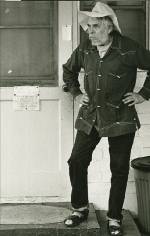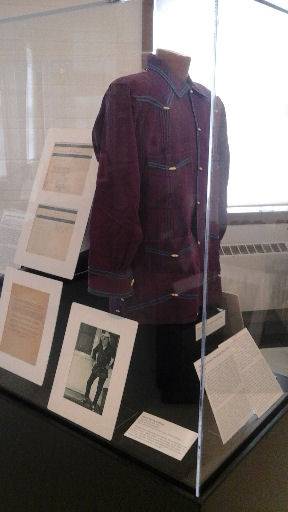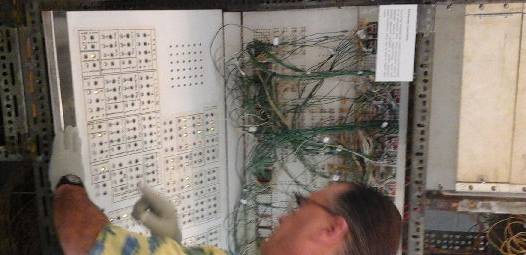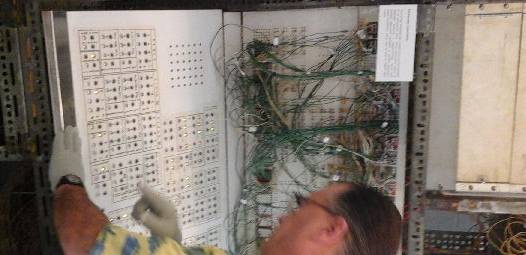 From my dim, dusty memory of visiting the Sousa Archives in the late 90s, I was prepared to direct readers to its halls for a patriotic activity appropriate for this week’s holiday. What I found instead was a display space with local interest, interactive exhibits, and a passionate staff ready to engage patrons.
From my dim, dusty memory of visiting the Sousa Archives in the late 90s, I was prepared to direct readers to its halls for a patriotic activity appropriate for this week’s holiday. What I found instead was a display space with local interest, interactive exhibits, and a passionate staff ready to engage patrons.
Located on the second floor of the Harding Bands Building, the entrance is flanked by a small exhibit of local music legends including an early-eighties action shot of Mark Rubel and some paraphernalia pertaining to HUM. Just inside the door, Pogo Studio made another appearance via an iPad stocked with recordings of Adrian Belew and the Elvis Brothers. We were off to a good start; I couldn’t wait for the rest.

An exhibit focusing on Harry Partch had recently opened, and I was excited to learn more about this man who has influenced such cutting-edge modern performers as Frank Zappa, The Residents, Tom Waits, and Sonic Youth. A composer who is usually mentioned in the same sentence as John Cage or Philip Glass due to writing pieces that make traditional symphony audiences uncomfortable, Partch was committed to “the integration of music, dance, theatricality and spoken word”. This became very clear while viewing his production staged at the University of Illinois from the early sixties. The costumes, physical contortion, and drama exhibited by the performers was nothing short of operatic. By embodying many forms of artistic expression, he felt different from the other composers, which is humorously communicated in some correspondence between Partch and Cage displayed; it was worth the trip to read exactly what the two thought of each other, in their own words. (Teaser: editing and hexes are involved…)
In the rest of the museum, I expected, and found, a room full of documents, photos, and audio/visual artifacts. Surprisingly, more was waiting for me, including: the chance to play a marimba, view rare footage of the Partch production, and observe an immersive demonstration of the SAL-MAR Construction, the world’s first composing machine. Had I been an educated instrumentalist, I would have even been able to request to play one of their Civil War-era tubas — the entire place is like the Orpheum Children’s Museum, but for the musically inclined.

Director Scott Schwartz and a graduate assistant, Nolan Vailler, were at hand and ready to elucidate and demonstrate at any point. The best demonstration offered was of the SAL-MAR: an improvisational composition computer that, due to working pieces from the original Illiac supercomputer, can generate sound combinations working with a base of “infinity times eight” tones. Schwartz noted that community groups and composers from around the country visit just to play with the machine, so be sure to make an appointment if you’d like a chance.
Standing before me with a ponytail and a Hawaiian shirt, he explained that not just this exhibit, but the entire exhibition space, including the staff, was “all about the mavericks”. Whether taking instruments to elementary schools or allowing professionals to romp in this playground, he stressed to me that “We are here to preserve the objects, but also to engage with them. It’s all about the sound; you have to play it.”
The Sousa Archives and Center for American Music is open 8:30 a.m.-5 p.m., Monday through Friday, so take some time to explore our very own maverick museum. Saturdays are by appointment and there are often staff already on hand, they just ask you to please use the online form or call 217-333-4577 during regular weekday hours to set up a Saturday visit.








